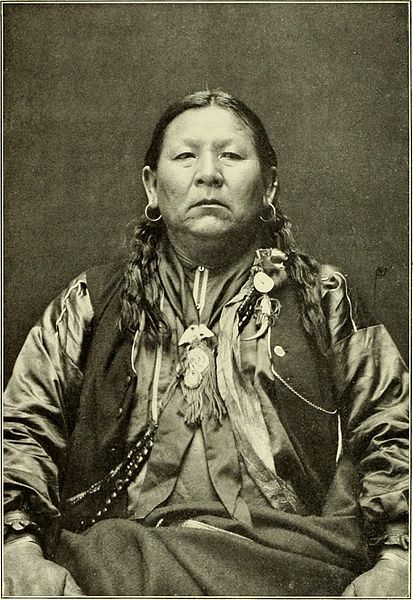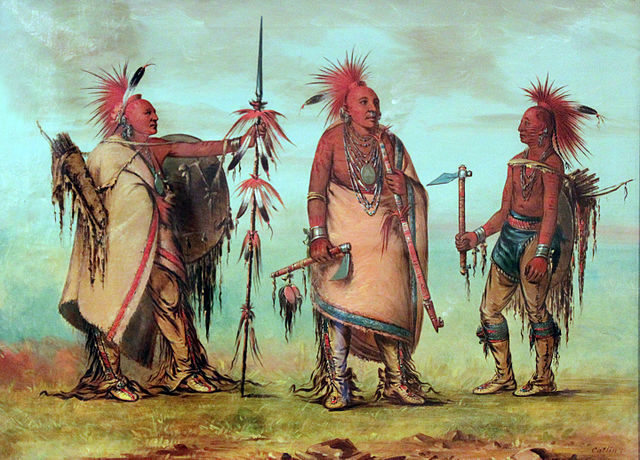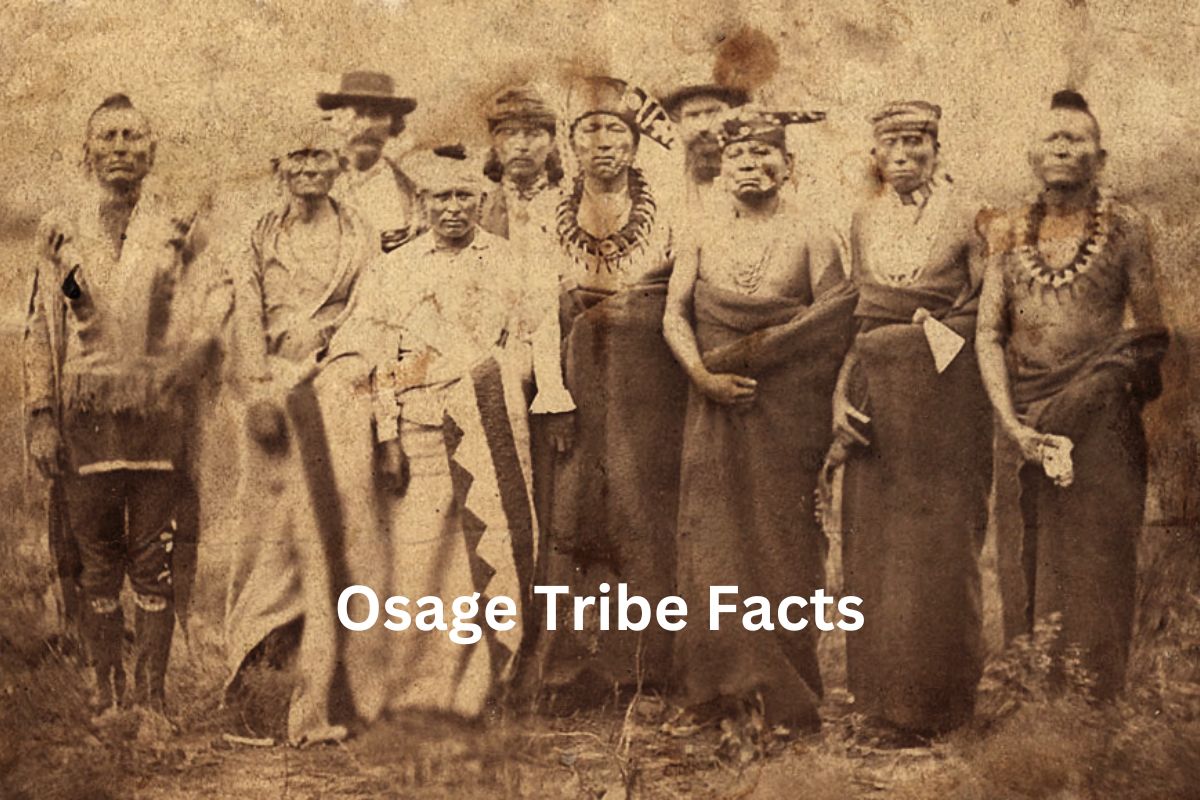The Osage Tribe, also known as the Osage Nation, is a Native American tribe with a rich history and cultural heritage. Originally inhabiting a vast territory in present-day Missouri, Kansas, Oklahoma, and Arkansas, the Osage people were known for their hunting skills and agricultural practices.
They have retained their reservation in northeastern Oklahoma, known as the Osage Nation Reservation.
The Osage Tribe experienced great wealth from oil discoveries on their lands, making them one of the wealthiest groups in the early 20th century. However, they also faced a series of murders and mysterious deaths during that time.
Today, the Osage Nation is governed by a tribal council and a principal chief, and they actively promote cultural preservation and economic development within their community.
Facts About the Osage Tribe
1. The Osage Tribe originally inhabited a large territory in present-day Missouri, Kansas, Oklahoma, and Arkansas
The Osage Tribe, also referred to as the Osage Nation, is an indigenous group with a fascinating history and cultural legacy. They are part of the Dhegiha branch of the Siouan language family and have a distinct linguistic and cultural identity.
Also Read: Cheyenne Tribe Facts
The Osage people originally inhabited a vast territory encompassing parts of present-day Missouri, Kansas, Oklahoma, and Arkansas. They were one of the dominant tribes in the Great Plains region and established a thriving society based on hunting, agriculture, and trade.

2. The Osage people are traditionally known for their hunting and agricultural practices
The Osage Tribe had a deep connection with the land and relied on both hunting and agriculture for sustenance. They were skilled hunters and masters of horsemanship, allowing them to pursue and hunt bison effectively.
Also Read: Facts About the Shoshone Tribe
Bison served as a primary source of food, providing meat, hides for clothing and shelter, and bones for tools and other necessities.
In addition to hunting, the Osage people cultivated crops such as corn, beans, and squash. They developed sophisticated agricultural techniques, including the use of mound gardens and crop rotation, which contributed to their self-sufficiency and food security.
These agricultural practices were essential for sustaining their communities and ensuring a stable food supply.
3. The Osage Tribe is one of the few Native American tribes that retained its reservation in Oklahoma
The Osage Tribe’s reservation, known as the Osage Nation Reservation, is located in northeastern Oklahoma. The reservation covers a substantial area of over 1.5 million acres, encompassing parts of Osage, Tulsa, Pawnee, and Washington counties.
This land has remained under the control and ownership of the Osage people, preserving their sovereignty and providing a home for their community.
The Osage Nation Reservation holds significant cultural and historical importance to the tribe. It serves as a physical manifestation of their ancestral lands and provides a space for cultural preservation, community development, and self-governance.
The reservation is governed by the Osage tribal council, which consists of elected representatives from different districts within the Osage Nation, and overseen by a principal chief who holds the highest office within the tribal government.
Together, they work towards promoting the well-being and interests of the Osage people while preserving their rich cultural heritage.
4. The Osage Tribe has a rich cultural heritage, and their traditional dances and ceremonies are still practiced today
The Osage Tribe has a vibrant cultural heritage that is celebrated through their traditional dances and ceremonies. One of the most significant ceremonial events for the Osage people is the In-Lon-Schka, also known as the “Play” or the “Buffalo Dance.”
It is held annually and is considered the most important and sacred ceremony for the tribe. The In-Lon-Schka represents the renewal of the Osage people and their way of life. It involves intricate dances, songs, storytelling, and the honoring of ancestors and tribal traditions.
The ceremony serves as a vital connection to their cultural roots and provides a platform for passing down tribal knowledge to future generations.

5. Historically, the Osage Tribe was known as the “Little Ones” by other Native American tribes
Historically, the Osage Tribe was renowned for their impressive physical stature, earning them the nickname “Little Ones” from neighboring tribes. In reality, the Osage people were among the tallest Native Americans, with men averaging around 5’9″ (175 cm) in height and women around 5’6″ (167 cm).
This height difference led to the misconception among other tribes that the Osage were smaller in stature. The Osage people took pride in their tallness and considered it a distinguishing characteristic.
6. The discovery of oil on Osage lands in the early 20th century brought great wealth to the tribe
The early 20th century brought significant changes to the Osage Tribe with the discovery of vast oil reserves on their lands. This oil boom transformed the fortunes of the Osage people and made them one of the wealthiest communities in the world at the time. With the newfound wealth, the Osage experienced a period of economic prosperity and cultural transformation.
The wealth generated from the oil reserves had both positive and negative impacts on the tribe. It brought improved infrastructure, education, and healthcare to the Osage people, enabling them to modernize their communities. However, it also attracted outside interest and led to exploitation, corruption, and even violence.
7. In the 1920s, the Osage experienced a series of murders and mysterious deaths, known as the “Osage Indian Murder Investigation”
During the 1920s, the Osage Tribe faced a series of murders and mysterious deaths. These crimes, known as the “Osage Indian Murder Investigation” or the “Reign of Terror,” targeted wealthy Osage tribal members who had inherited oil wealth.
The investigation into these crimes became one of the FBI’s first major homicide cases and exposed the extent of corruption and greed surrounding the Osage oil wealth.
The events highlighted the resilience and strength of the Osage people as they fought for justice and worked to protect their community and resources.
Today, the Osage Tribe continues to strive for economic development, cultural preservation, and the well-being of their people.
8. The Osage Nation is governed by a tribal council and a principal chief
The Osage Tribe has a unique system of governance to represent their community. The tribal council serves as the legislative body of the Osage Nation. It consists of elected representatives from different districts within the Osage Nation, with each district having its own representation.
The tribal council plays a crucial role in making decisions, enacting laws, and representing the interests of the Osage people. The principal chief, the highest-ranking official, is also elected by the tribal members and serves as the executive leader of the Osage Nation.
9. The Osage language, also known as Wazhazhe, is a member of the Dhegiha branch of the Siouan language family
The Osage language, also known as Wazhazhe, is an integral part of the tribe’s cultural heritage. It belongs to the Dhegiha branch of the Siouan language family. Like many Native American languages, the Osage language faced a decline in speakers over the years due to historical factors such as colonization and cultural assimilation.
However, efforts are being made to revitalize and preserve the Osage language. Language programs and educational initiatives have been implemented within the Osage Nation to teach and promote the language among tribal members, especially the younger generation.
Preserving the Osage language is crucial for maintaining cultural identity and ensuring the transmission of traditional knowledge and values.
10. The Osage Tribe is actively involved in promoting cultural preservation and economic development
The Osage Tribe’s history of wealth and economic development continues to shape their present-day initiatives. The discovery of oil on their lands and the resulting wealth generated a legacy of business ventures and investments.
The Osage Tribe has been involved in various industries, including gaming and hospitality enterprises. They operate successful casinos, resorts, and other businesses that contribute to the economic growth and self-sufficiency of the tribe.
These ventures provide employment opportunities, generate revenue for community programs and services, and support the overall well-being of the Osage people.
